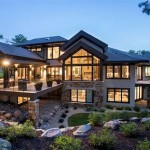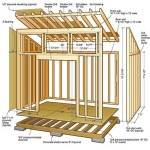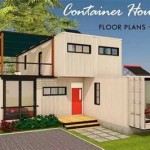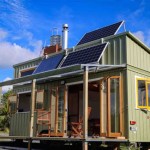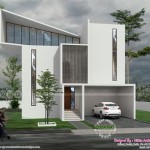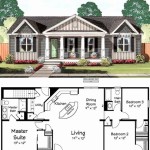Net Zero Energy House Plans are building designs that aim to create homes that produce as much energy as they consume over a year. By combining energy-efficient features and renewable energy sources, these plans offer a sustainable and cost-effective way to achieve energy independence. For instance, a net zero energy house in California might utilize solar panels to generate electricity, while employing energy-efficient appliances and insulation to minimize energy consumption.
Adopting Net Zero Energy House Plans presents numerous advantages. These homes significantly reduce energy costs, contributing to long-term savings for homeowners. Furthermore, they lessen environmental impact by lowering greenhouse gas emissions, thus contributing to a cleaner and healthier planet.
In the following sections, we will delve deeper into the principles of Net Zero Energy House Plans, exploring their components, benefits, and challenges. We will also discuss specific design strategies and technologies used to achieve net zero energy performance, providing insights for architects, builders, and homeowners alike.
Key considerations for Net Zero Energy House Plans:
- Insulation
- Air sealing
- Energy-efficient appliances
- Renewable energy sources
- Passive solar design
- LED lighting
- Smart energy management
- Third-party certification
These elements work together to minimize energy consumption, maximize energy production, and achieve net zero energy performance.
Insulation
Insulation plays a crucial role in Net Zero Energy House Plans by minimizing heat transfer through the building envelope, reducing the need for heating and cooling. Effective insulation helps maintain a comfortable indoor temperature, even in extreme weather conditions.
- Types of Insulation:
Various insulation materials are available, including fiberglass, cellulose, spray foam, and rigid foam. Each type offers unique properties and R-values (a measure of thermal resistance).
- R-Value:
The R-value indicates the insulation’s ability to resist heat flow. Higher R-values provide better insulation. Net Zero Energy House Plans typically require higher R-values in walls, ceilings, and floors to minimize energy loss.
- Proper Installation:
Proper insulation installation is essential to achieve optimal performance. Gaps or air leaks can significantly reduce insulation effectiveness. Qualified contractors should install insulation according to manufacturer specifications to ensure a tight building envelope.
- Continuous Insulation:
Continuous insulation eliminates thermal bridges, areas where heat can easily escape. By wrapping the building envelope in a continuous layer of insulation, heat loss is minimized, and the building’s energy efficiency is improved.
Effective insulation is a cornerstone of Net Zero Energy House Plans, reducing energy consumption and contributing to a more comfortable and sustainable living environment.
Air Sealing
Air sealing is another crucial aspect of Net Zero Energy House Plans. It involves sealing all gaps and cracks in the building envelope to prevent uncontrolled air leakage. This is important because air leakage can significantly increase energy consumption by allowing conditioned air to escape and outside air to enter. Effective air sealing helps maintain a consistent indoor temperature and reduces the load on heating and cooling systems.
- Sources of Air Leakage:
Air leakage can occur through various openings, including cracks around windows and doors, gaps in walls and ceilings, and penetrations for pipes and wires. Even small gaps can allow significant air infiltration, compromising the energy efficiency of the building.
- Air Sealing Materials:
A variety of materials can be used for air sealing, including caulk, weatherstripping, gaskets, and spray foam. The choice of material depends on the specific application and the size of the gap being sealed.
- Continuous Air Barrier:
An effective air sealing strategy involves creating a continuous air barrier throughout the building envelope. This means sealing all gaps and cracks, as well as any penetrations for pipes, wires, and ducts. A continuous air barrier helps prevent air leakage and ensures optimal energy performance.
- Importance of Ventilation:
While air sealing is important for energy efficiency, proper ventilation is still essential for indoor air quality. Net Zero Energy House Plans typically incorporate mechanical ventilation systems that provide fresh air while minimizing heat loss.
Meticulous air sealing is essential for Net Zero Energy House Plans, as it minimizes energy consumption, improves comfort levels, and contributes to a healthier indoor environment.
Energy-efficient appliances
Energy-efficient appliances play a significant role in Net Zero Energy House Plans by reducing energy consumption and minimizing the overall energy demand of the building. These appliances utilize advanced technologies and innovative designs to operate with less energy while maintaining or even enhancing performance.
- Energy Star Certification:
Look for appliances that have earned the Energy Star certification. This certification indicates that the appliance meets strict energy efficiency standards set by the U.S. Environmental Protection Agency (EPA). Energy Star appliances typically consume 10-50% less energy than standard models.
- Appliance Energy Guide Label:
When selecting appliances, pay attention to the Appliance Energy Guide label. This label provides information on the appliance’s estimated annual energy consumption and its energy efficiency rating. Choose appliances with high energy efficiency ratings to minimize energy usage.
- Refrigerators and Freezers:
Refrigerators and freezers are among the most energy-consuming appliances in a home. Energy-efficient models feature advanced insulation, efficient compressors, and optimized defrost systems to reduce energy consumption. Look for models with Energy Star certification and high energy efficiency ratings.
- Dishwashers:
Dishwashers have become more energy-efficient in recent years. Energy-efficient dishwashers use less water and energy, thanks to improved wash cycles, efficient pumps, and advanced drying systems. Choose models with Energy Star certification and high energy efficiency ratings to minimize water and energy consumption.
By incorporating energy-efficient appliances into Net Zero Energy House Plans, homeowners can significantly reduce their energy consumption and contribute to a more sustainable lifestyle.
Renewable energy sources
Renewable energy sources play a crucial role in Net Zero Energy House Plans by providing clean and sustainable energy to meet the building’s electricity, heating, and cooling needs. These sources harness natural resources such as sunlight, wind, and geothermal heat to generate energy, reducing reliance on fossil fuels and minimizing greenhouse gas emissions.
- Solar photovoltaic (PV) systems:
Solar PV systems convert sunlight directly into electricity using photovoltaic cells. These systems are typically installed on rooftops or in ground-mounted arrays. Solar PV systems offer a clean and renewable source of electricity, with no operating costs or emissions. Net Zero Energy House Plans often incorporate solar PV systems to generate a significant portion of their electricity needs.
- Solar thermal systems:
Solar thermal systems use sunlight to heat water or air for space heating, domestic hot water, or pool heating. These systems consist of solar collectors, which absorb sunlight and transfer heat to a fluid. Solar thermal systems are a cost-effective way to reduce energy consumption and utilize renewable energy.
- Wind turbines:
Wind turbines convert the kinetic energy of the wind into electricity. These turbines are typically installed on towers and are suitable for areas with consistent wind resources. Wind turbines can generate a significant amount of electricity, making them a viable option for Net Zero Energy House Plans in windy locations.
- Geothermal heat pumps:
Geothermal heat pumps utilize the stable temperature of the earth to heat and cool buildings. These systems use a ground loop, which is buried underground, to exchange heat with the earth. Geothermal heat pumps are highly efficient and can significantly reduce energy consumption for heating and cooling.
By integrating renewable energy sources into Net Zero Energy House Plans, homeowners can generate clean and sustainable energy, reduce their reliance on fossil fuels, and contribute to a greener and more sustainable future.
Passive solar design
Passive solar design is a crucial aspect of Net Zero Energy House Plans. It involves strategically designing a building to maximize the utilization of natural sunlight for heating and cooling, reducing the need for conventional energy sources. By incorporating passive solar design principles, homeowners can create comfortable and energy-efficient living spaces.
- Orientation and Window Placement:
Proper orientation of the building and strategic placement of windows are essential for passive solar design. South-facing windows allow for maximum sunlight penetration during the winter months, providing natural heating. Overhangs and shading devices can be used to minimize solar heat gain during the summer, reducing the need for air conditioning.
- Thermal Mass:
Thermal mass refers to materials that can absorb and store heat, such as concrete, brick, and stone. Incorporating thermal mass into the building design allows it to absorb heat from the sun during the day and release it slowly at night, providing a more stable indoor temperature and reducing heating and cooling costs.
- Insulation and Air Sealing:
Effective insulation and air sealing are crucial to maximize the benefits of passive solar design. A well-insulated building envelope minimizes heat loss, ensuring that the heat gained from the sun is retained inside the building. Air sealing prevents drafts and uncontrolled air leakage, further improving energy efficiency.
- Natural Ventilation:
Natural ventilation strategies, such as cross-ventilation and stack ventilation, can be incorporated into passive solar design to promote airflow and reduce the need for mechanical cooling. Cross-ventilation allows for the flow of fresh air through open windows on opposite sides of the building, while stack ventilation utilizes the natural buoyancy of warm air to create a cooling effect.
By implementing passive solar design principles, Net Zero Energy House Plans can harness the power of the sun to create comfortable and energy-efficient living environments, reducing reliance on conventional energy sources and contributing to a more sustainable future.
LED lighting
LED (light-emitting diode) lighting plays a significant role in Net Zero Energy House Plans due to its exceptional energy efficiency and long lifespan. LED lights consume significantly less energy compared to traditional lighting sources such as incandescent and fluorescent bulbs, contributing to reduced electricity consumption and lower energy bills.
LEDs are semiconductor devices that emit light when an electric current passes through them. Unlike traditional bulbs that produce light by heating a filament or gas, LEDs generate light through a process called electroluminescence, which is much more energy-efficient. Additionally, LEDs have a longer lifespan, typically lasting up to 50,000 hours or more, which reduces the frequency of bulb replacements and maintenance costs.
In Net Zero Energy House Plans, LED lighting is often incorporated throughout the building, including interior lighting, exterior lighting, and landscape lighting. LED fixtures are available in a variety of forms, including bulbs, panels, and strips, providing flexibility in design and application. By utilizing LED lighting, homeowners can significantly reduce their lighting energy consumption, contributing to the overall energy efficiency of their Net Zero Energy House.
Furthermore, LEDs offer excellent color rendering and dimming capabilities, enhancing the aesthetic appeal and functionality of lighting systems. They produce high-quality light with minimal glare or flicker, providing a comfortable and inviting ambiance. Additionally, LEDs are dimmable, allowing homeowners to adjust the light intensity to suit their preferences and create different lighting scenes.
Smart energy management
Smart energy management plays a crucial role in optimizing the energy efficiency of Net Zero Energy House Plans. It involves the use of intelligent systems and technologies to monitor, control, and automate energy consumption, enabling homeowners to make informed decisions and maximize energy savings.
One key aspect of smart energy management is energy monitoring. Advanced metering systems and sensors are installed throughout the home to collect real-time data on energy consumption from various appliances, systems, and circuits. This data is then analyzed to identify patterns, pinpoint areas of high energy usage, and detect any inefficiencies or potential faults.
Based on the energy monitoring data, homeowners can make informed decisions to adjust their energy consumption habits and optimize the performance of their Net Zero Energy House. For example, they can identify and reduce unnecessary energy consumption by unplugging electronics when not in use, using energy-efficient appliances, and adopting energy-saving practices.
Furthermore, smart energy management systems can automate energy consumption based on predefined rules and schedules. For instance, smart thermostats can automatically adjust the indoor temperature based on occupancy and weather conditions, ensuring optimal comfort while minimizing energy usage for heating and cooling.
In addition to monitoring and automation, smart energy management systems can also integrate with renewable energy sources, such as solar PV systems and battery storage. By optimizing the utilization of renewable energy and coordinating it with grid electricity, homeowners can further reduce their reliance on conventional energy sources and increase their energy independence.
Third-party certification
Third-party certification is a crucial aspect of Net Zero Energy House Plans as it provides independent verification and assurance that a building meets specific energy efficiency and performance standards. Renowned organizations, such as the U.S. Department of Energy (DOE) and the Passive House Institute US (PHIUS), offer certification programs that evaluate and certify Net Zero Energy Houses based on rigorous criteria.
The certification process typically involves a thorough review of the building’s design and construction plans, as well as on-site inspections and testing to verify its energy performance. Third-party certifiers assess various aspects of the building, including:
- Building envelope insulation and air sealing
- Energy-efficient appliances and lighting
- Renewable energy systems (e.g., solar PV, geothermal)
- Overall energy consumption and net energy production
Upon successful completion of the certification process, the building receives a certificate or label that signifies its compliance with the established standards. This certification serves as a credible and recognizable mark of quality, assuring homeowners and potential buyers that the building meets the highest levels of energy efficiency and performance.
Third-party certification offers several benefits to homeowners and stakeholders involved in Net Zero Energy House Plans:
- Verified Energy Performance: Certification provides independent verification that the building meets the net zero energy goals, ensuring that it delivers on its energy efficiency promises.
- Quality Assurance: The certification process involves rigorous evaluation and testing, guaranteeing that the building is constructed to the highest standards of energy efficiency and durability.
- Increased Resale Value: A third-party certification can enhance the value of a Net Zero Energy House, as it demonstrates the building’s exceptional energy performance and sustainability credentials.
In addition to the benefits mentioned, third-party certification can also contribute to broader environmental and societal goals. By promoting the construction of energy-efficient buildings, certification programs help reduce greenhouse gas emissions, mitigate the effects of climate change, and foster a more sustainable built environment.









Related Posts

